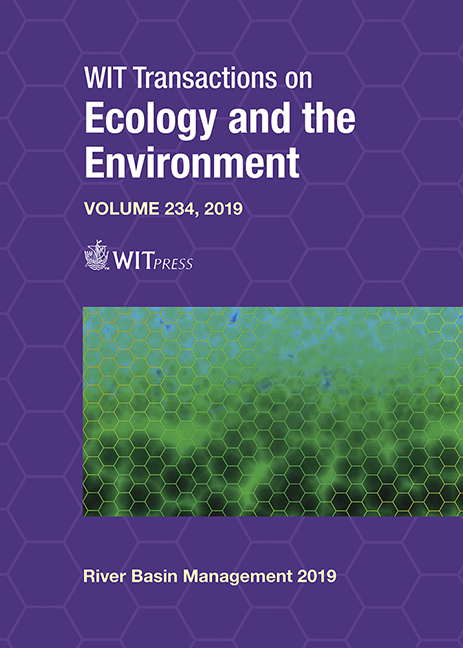LONGITUDINAL DISPERSION PREDICTION OF RIVER BALOGUN USING CONSTANT DISTANCE AND TIME APPROACH AT DIFFERENT SAMPLING TIME INTERVALS
Price
Free (open access)
Transaction
Volume
234
Pages
8
Page Range
201 - 208
Published
2019
Paper DOI
10.2495/RBM190201
Copyright
WIT Press
Author(s)
IMOKHAI T. TENEBE, OGBIYE A. SAMUEL, DAVID O. OMOLE, PRAISEGOD C. EMENIKE, IREWOLE B. ONIEMAYIN, DIWA I. DANIEL, OMEJE MAXWELL
Abstract
The estimation of dispersion number or its coefficients can be used to determine the degradation capacity of rivers. This can be determined using tracer studies with the different methods found in the literature. However, for this study, the constant distance and time method was used at two different sampling time intervals to determine its value as well as the implication of being subjective in sampling time interval selection. This study showed that the dispersion number obtained from River Balogun using the Levenspiel and Smith approach at the 3 mins time interval (d=0.037152) and 5 mins interval (d=0.0214) varied by a factor of 1.76. This implies that the dispersion number could be underestimated or overestimated. Furthermore, the first sampling interval required 1.54 times more tracer concentration data than the second sampling time interval thereby incurring more cost, time and labour. Therefore, it is suggested that more sustainable approaches are developed and practised that would use limited tracer data collection for calculation as well as limit subjectivity in sampling time selection, yet give closely precise values of dispersion number.
Keywords
river management, assimilatory capacity, dispersion coefficient, sustainable approach, pollution





